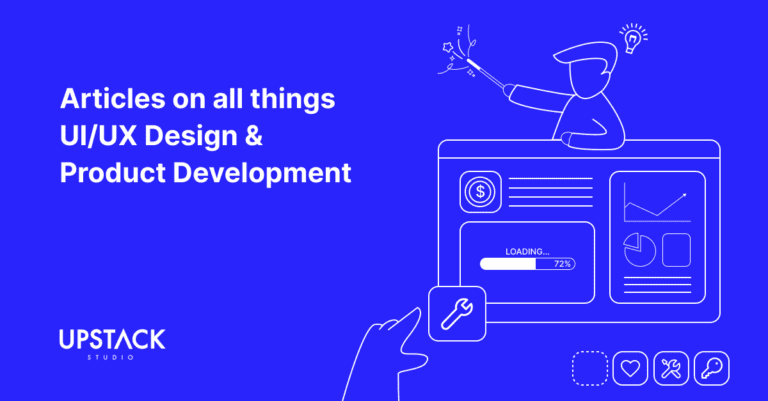You’re Fast, but are you Agile?
Many people can push out a product fast, but Agile methodology makes it both fast and good.
Agile Software Development is an approach to project management that emphasizes these three points:
- flexibility
- customer collaboration
- results
While planning in advance is not neglected, it must never come at the cost of the above.

This translates into an iterative approach where tasks are broken down into manageable sprints for faster delivery and better adaptability.
In the modern world, Agile has paved the way for better team collaboration, increased customer satisfaction, and improved project control. Agile’s charm lies in its focus on continuous improvement, adaptability, and flexibility that all modern software development require.
What is Agile Software Development?
As mentioned, Agile Software Development is a project management approach, extensively utilized in the field of software development, and which prioritizes flexibility and collaboration.
How Agile Started
The Agile methodology was born out of the need for a more adaptive and responsive method of software development.
It traces its roots back to the 1990s when various lightweight software development methods evolved in reaction to the prevailing heavyweight methods that critics described as overly regulated, planned, and micro-managed.
The Agile Manifesto and Its Key Principles
At the heart of Agile development lies the Agile Manifesto.
Drafted in 2001, its main principles emphasize:
- individuals and interactions over processes and tools
- working software over comprehensive documentation
- customer collaboration over contract negotiation, and
- responding to change over following a plan
It established the foundation for Agile development, embracing adaptivity, responsiveness, and customer collaboration.
Agile vs. Waterfall Methodologies
You can’t talk about Agile without bringing up Waterfall methodology, given they’re both polar opposites of each other, as evidenced by the comparison table below.
| Agile Methodology | Waterfall Methodology | |
| Approach | Iterative, incremental approach that embraces change. | Linear and sequential approach where each phase of the project must be completed entirely before the next. |
| Feedback | Encourages frequent feedback. | Attempting to incorporate feedback can be costly and time-consuming. |
| Changes | Allows for rapid adjustments throughout the project. | Changes are hard to implement once a phase has been completed. |
| Best Use Cases | Best suited to projects requiring flexibility and adaptability, such as software development where user needs can change rapidly. | Works well for projects with clear, unchanging specifications, or where output requires a high degree of accuracy – like manufacturing and construction. |
| Worst Use Cases | Not ideal for projects with rigid structures, or where changes are less likely. | Not suited to projects requiring significant flexibility or where user needs are likely to change through the course of project development. |
We’d like to mention that there are absolutely times when Waterfall methodology is the better choice.

Most of the time, however, Agile is the way to go.
Benefits of Agile Software Development
Agile Software Development offers numerous advantages:
- Faster time-to-market: Agile enables a faster product development cycle, streamlining the process from conception to deployment.
- Improved collaboration: Agile promotes frequent communication and cooperation among stakeholders, reducing misunderstandings and enhancing the overall work environment.
- Enhanced product quality: Through emphasis on regular feedback and incrementally improving the product, Agile results in a higher-quality end product.
- Adaptability to change: Agile practices allow teams to navigate changes in the market or project requirements with agility and efficiency.
- Customer satisfaction: Agile’s emphasis on customer collaboration ensures the product meets their needs and expectations, enhancing overall customer satisfaction.
Most start-up founders will benefit greatly from these advantages.
Agile Methodologies
Let’s delve into a range of popular Agile methodologies such as:
Scrum
This is a popular Agile method incorporating an incremental approach. It promotes cross-functional, self-managed teams that deliver work in “sprints” – short, time-boxed iterations of one to four weeks. With regular meetings (like daily scrums and sprint planning), it ensures transparency and prompt problem solving.
Kanban
Kanban operates on a just-in-time concept and aims to minimize waste. It is ideal for maintenance projects or operational enhancement type of projects. Its visual nature (usually using boards with cards or sticky notes) helps track workflow and identify bottlenecks at any level.
Lean
Rooted in manufacturing processes, Lean aims at waste reduction and efficiency enhancement. It promotes constant improvement, fast delivery, and optimizes the development process by identifying and eliminating all types of waste (from superfluous meetings to overburdened resources).
Extreme Programming (XP)
XP focuses on enhancing software quality and adaptability to changing customer requirements. It emphasizes collaboration with rapid feedback loops, continuous testing and code reviews, and a high level of communication.
Each methodology has its unique features and your choice depends on team size, company culture, project requirements, and client preferences.
The Components of the Agile Framework
Before delving into the Agile framework, it’s important to familiarize yourself with some of its key components:
User Stories
This can be construed as the building blocks of Agile. User stories describe what a user wants the software to do, from the user’s perspective. They allow developers to keep the needs and requirements of the end-user clearly in sight.
Sprints/Iterations
In Agile, work is broken down into small manageable chunks known as iterations or sprints. Typically, a sprint lasts for two weeks to a month during which a specific segment of the project is completed.
Product Backlog
The product backlog is an ordered list of everything needed in the product. It contains an overview of all upcoming work and features, prioritized for development according to user value and business importance.
Daily Stand-Up Meetings
Stand-up meetings form the backbone of Agile communication. They are brief, daily meetings where the team discusses progress and any obstacles to work. This ensures everyone is on the same page and encourages problem-solving.
Retrospectives
At the end of each sprint, Agile teams conduct a retrospective. They review what worked and what didn’t, what they learned, and how they can improve. This constant feedback loop is key to Agile’s focus on continuous improvement.
Roles and Responsibilities of Agile Development Teams
A conventional Agile development team has several key roles that rely on one another, outlined in the table below.
| Role | Responsibilities | Interaction in Agile Projects |
| Product Owner | Ensures the team works on the most valuable features first. | The Product Owner maintains direct communication with the development team to clarify any questions about the product backlog items. They actively participate in iterative planning and review sessions. |
| Scrum Master | Facilitates the team’s progress towards project goals. | Scrum Masters ensure the team follows Agile principles and practices. They run daily stand-ups and other essential team meetings, and work with the Product Owner to manage the product backlog effectively. |
| Development Team | Handles design, implementation, and testing of features. | The Development Team communicate regularly in daily stand-ups, execute work from the sprint backlog, and provide feedback in retrospectives. |
Basically, there are roles dedicated to managing and executing, and everyone must prove they have been doing their job every single day!
Common Challenges of Agile Software Development
Transitioning to Agile software development is not without its obstacles.

Let’s explore some common hurdles and how you can overcome them.
Resistance to Change
Resistance is a natural reaction to change, especially something as transformative as Agile. This resistance can stem from misunderstanding, a belief that existing methods are better, or pure inertia.
Solution: Make your team understand what Agile is and how it will impact their day-to-day work positively. Present Agile as a dynamic, iterative process that enhances productivity and does not threaten their roles.
Scalability Issues
Scaling Agile to larger teams and bigger projects can be challenging. Issues such as maintaining communication, coordinating tasks, and keeping an eye on the overall project could arise.
Solution: Consider adopting Agile frameworks like Scrum or SAFe that have built-in mechanisms specifically designed for larger-scale projects.
Remote Working Teams
Modern firms often work with globally distributed teams, which poses challenges for Agile methods that historically rely on close-knit, onsite teams.
Solution: Use tools like Zoom or Slack for virtual daily stand-ups. Find a compromise between different time zones for synchronous meetings. Carry out regular retrospectives to improve the process.
Agile Project Management Tools and Software
Let’s explore some of the popular Agile project management tools that can be a great asset to your software development projects:
- JIRA: JIRA is a powerful project management tool that is widely used in Agile development. It allows you to create user stories, track issues, and manage sprints conveniently. Moreover, its customizability makes it a favorite for many project managers.
- Trello: Known for its intuitive, user-friendly interface, Trello is excellent for organizing tasks and setting workflow. Each task is represented by a card that can be moved across different columns representing different stages of your workflow.
- Asana: Asana is another notable Agile tool. It’s excellent for task and deadline management and team collaborations. It offers features like task assignation, commenting, and progress tracking which helps in maintaining project transparency.
- Monday.com: Monday.com is a versatile project management tool that stands out with its visual project tracking features. It’s suitable for both small and large teams and helps streamline workflows, project planning, and team collaboration efficiently.
Implementing Agile
So, you believe Agile is for you, and want to implement it into your next app development project?
Incorporating Agile into a project requires planning and a step-by-step approach, regardless of scale or complexity.
Here’s a step-by-step guide to implementing Agile in a development project:
Step 1: Assessing readiness
Are your teams prepared for the flexibility and autonomy Agile demands? Does your hardware support Agile’s rapid iteration cycles? Assessing readiness includes preparing staff for the change and aligning resources with Agile’s requirements.
Step 2: Training and coaching
Training and coaching team members on Agile values, principles, and tools can smoothen this transition. Invest in workshops, bring in experienced Agile developers, and ensure everyone understands their role in an Agile environment.
Step 3: Team setup
This involves reorganizing teams based on the skills required for the project, fostering a sense of ownership within the team, and nurturing an open line of communication.
Step 4: Iterative development
Agile is all about incremental and iterative development. Planning and developing in short stages, called sprints, allow for more frequent inspection, adaptation, and feedback.
This cycle continues until the project meets the desired standards.
Conclusion: There’s a reason Agile is so popular
And that reason is that Agile is awesome.
On a more serious note, let’s wrap up by repeating the immense benefits Agile brings to the table for startups.
The nature of startups is such that they require the ability to react swiftly to changes.
With its iterative approach, startups utilizing Agile can:
- deliver high-quality, customer-oriented products.
- quickly pivot if their initial product isn’t quite right
- continuously learn, adapt and improve their ways of working
This ensures the most efficient allocation of limited resources, and it’s why Upstack Studio has always utilized Agile methodology in our development unless clients explicitly request a more turn-key approach from us.
If you have an upcoming app or SaaS project and would like to engage an agency experienced in developing using Agile methodology, sign up for a free strategy session with us.
Let’s make great things happen!

Hey there stranger, thanks for reading all the way to the end. Consider joining our mailing list for a one-stop resource on everything from micro SaaS validation all the way to execution and promotion. Get a nifty list of questions to ask app developers when you sign up!
Download this template now so you know exactly what to ask App Development Agencies! Let us know where should we send it through the form below.







